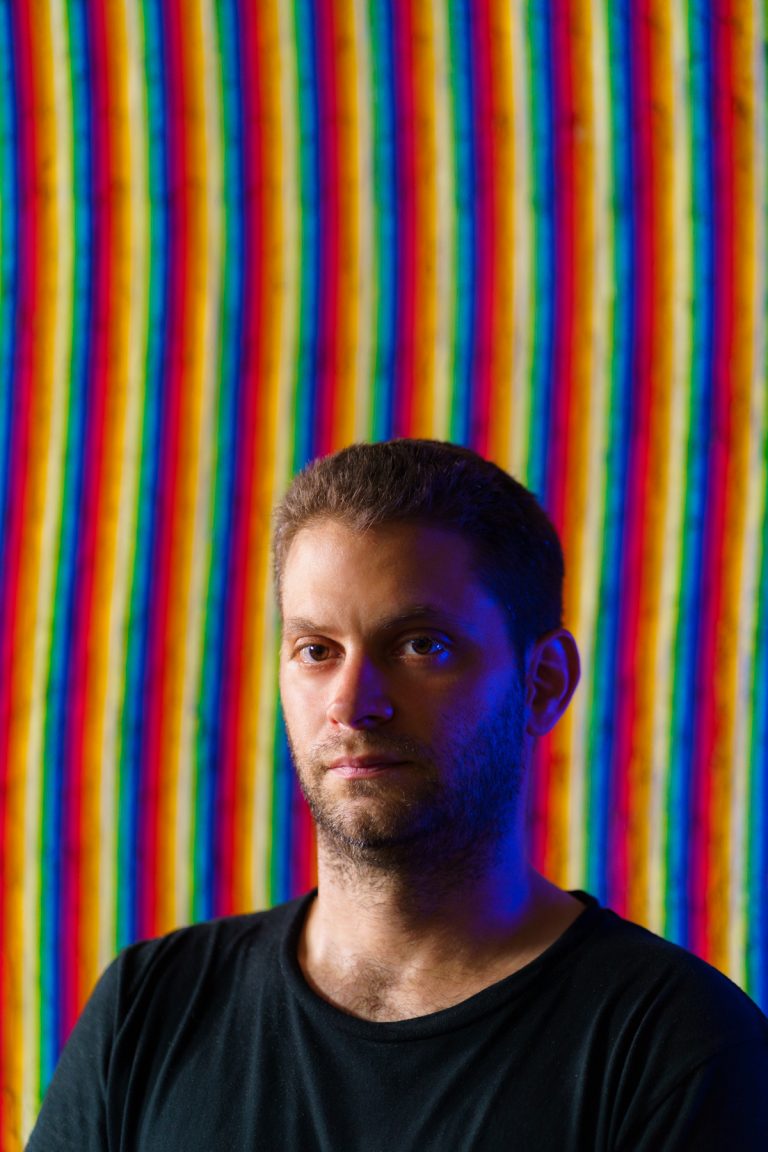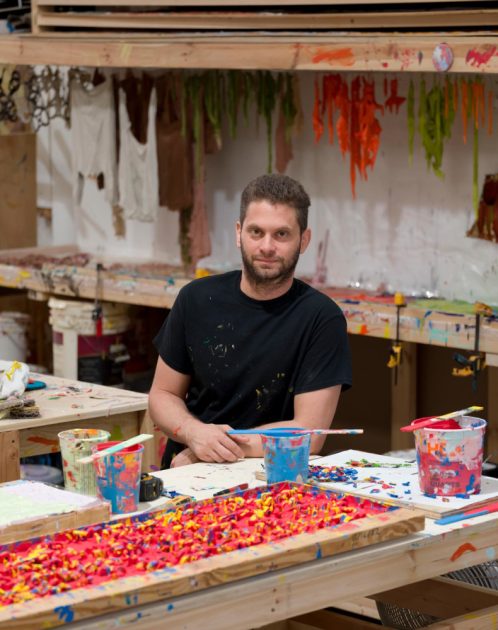
‘There Might Be A Future When The Colours We See Are Different.’ Venezuelan Artist Loriel Beltrán On His New Show ‘To Name The Light’
05 June, 2024In 1974 Venezuelan artist Carlos Cruz-Diez had an idea to animate the boredom of passengers in airports, who, without today’s digital distractions, were “always looking at the same watch, the same necktie in stores, because there is nothing else.” He decided to cover the main hall at the Simón Bolivar International Airport in Caracas with a tiled mosaic of orange, green, blue and black lines. As people walked across the tiled floor they became lost in a swirl of colours that appeared to move beneath their feet, an optical illusion characteristic of the Venezuelan Arte Cinético so visible in the country at that time.
Cruz-Diez’s Addictive Colour has long been a source of national pride for Venezuelans. An obituary of the artist in The Economist in 2019 remarked that the airport’s 270 metre-long, nine metre-wide mosaics is “where passengers often pause to photograph themselves and each other before murals so vivid they seem to breathe.” However, with the country’s recent political and economic crisis, the last quarter century has seen more and more Venezuelans pass through the airport’s hall, most of them never to return. At the same time Cruz-Diez’s artwork has started to deteriorate. For those Venezuelans leaving via the airport, now they take not just photographs:: many are now also taking its tiles as souvenirs.
In 2000, a 15-year old Loriel Beltrán and his family were amongst those Venezuelan nationals leaving Caracas for good. Now based in Miami, and himself a visual artist, Beltrán’s debut solo European exhibition To Name The Light has just opened at Lehmann Maupin in London. In the five works that make up the exhibition, the influence of Cruz-Diez is apparent. In a statement announcing his representation, Rachel Lehmann co-founder of the gallery cited Beltrán’s work as indebted to that of the “important legacy of Latin American modernism, canonized by figures such as Gego and Hélio Oiticica, and particular movements such as Op Art and Neo-Concretism.”
“Line and colour I have embedded in me from Venezuela. It’s normal growing up there, although it’s unconscious.” Beltrán tells me on a Zoom call from his studio in Miami. He shows me around the space as we talk, accompanied by the other studio residents, his two dogs Umma and Dots.
Early on in his career Beltrán realised that the accumulation of paint on his mixing palette had begun to interest him more than the paintings he’d been making. He began experimenting, and refined a meticulous, labour-intensive process in which layers of paint are poured into custom-built moulds, with each layer of paint allowed to dry and harden over time, building up and merging into new combinations of colour. Sometimes Beltrán will insert ‘interruptions’, coffee cups, plastic beer rings, whatever he has to hand that had been discarded that can be painted and added to the mould. He describes it as “A way of linking my own garbage to the landfill that lets you see the process.” In this way the distinction between artistic labour, which is supposed to be visible, and other types of labour, which are not meant to be seen, is eroded, he says.

Once ready, the hardened block is carved into strips using a hand-guillotine Beltrán designed himself. The strips are arranged flat and fastened onto a wooden surface. The result is a hybrid artwork merging sculpture and painting which defies an easy classification. The works ‘resist becoming images’, Beltrán stresses.
“We are surrounded by images, symbols. We are simplifying the experience constantly. The paintings shouldn’t be captured in a single glance.” He adds.
Seen face to face, the paintings come to life. Each rippling with their own light, they tease with their flashes of hidden colour. Depending on where you stand, they open and close, inviting glimpses of what lies beneath the multiple layers. With their textured, imperfect surfaces they evoke a corrugated roof, a woven tapestry, an abstract map. It is up to the viewer to decide. One painting appears to rustle in a changing wave of neon.
It’s like thinking about the future and the past, “ Beltrán says in reference to the neon work “I was reading about techniques that could combat climate change and the possibility of using sulphur dioxide – the gas a volcano emits when it erupts that brings down the temperature. I thought of the effect it could have on colour in the atmosphere. There might be a future when the colours we see are different.”
Like the tiles in Cruz -Diez’s mosaic, which have been given a new symbolism and purpose with their displacement, Beltrán has taken his visual memory and artistic legacy and transformed it into a new art form.
To Name the Light is on view at Lehmann Maupin, London until 22nd June.
Follow Sounds and Colours: Facebook / Twitter / Instagram / Mixcloud / Soundcloud / Bandcamp
Subscribe to the Sounds and Colours Newsletter for regular updates, news and competitions bringing the best of Latin American culture direct to your Inbox.

